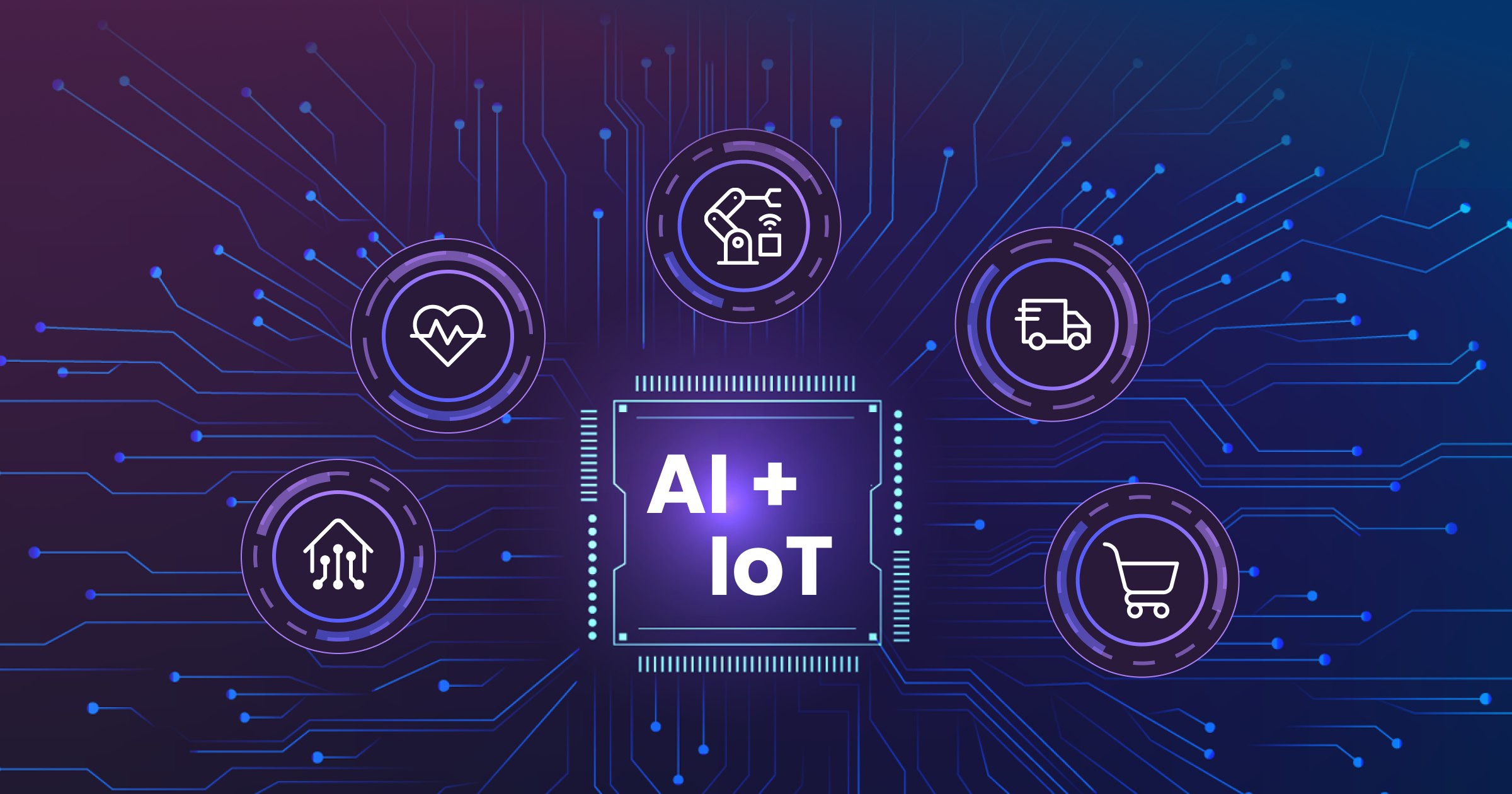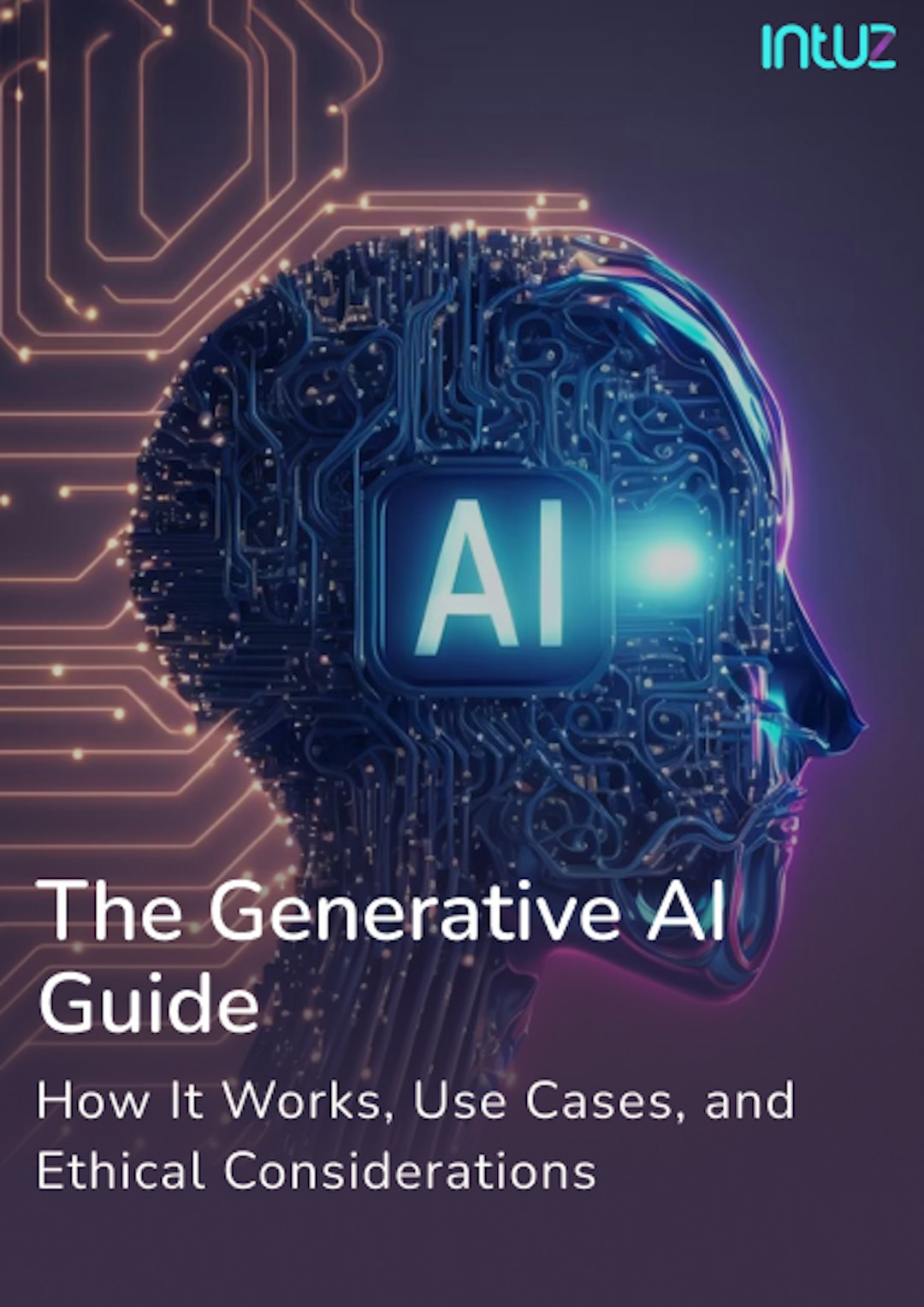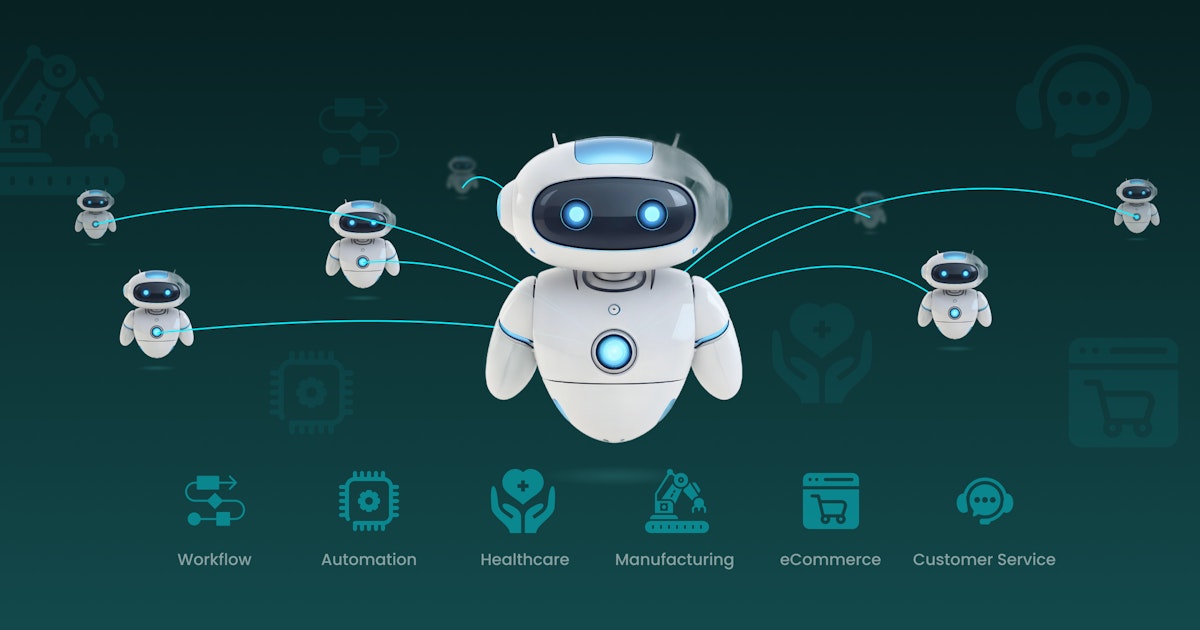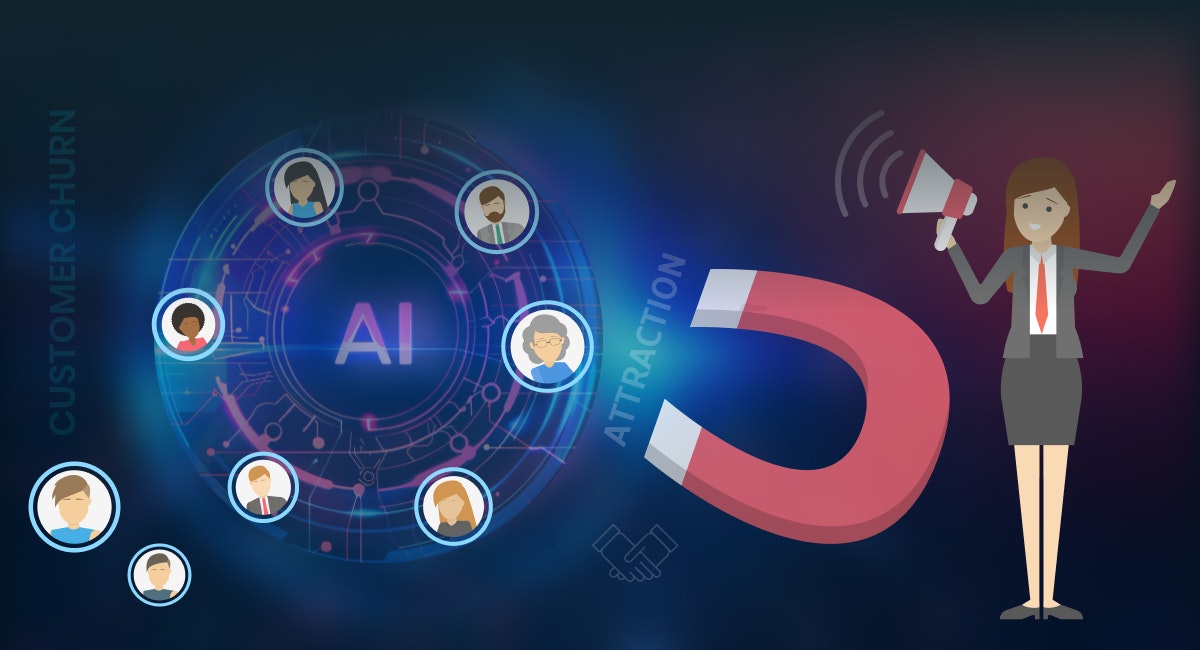Table of Content
In the modern digital world, almost everything is interconnected. We have come to expect it to be so, and we expect that interconnectedness to translate into faster processes, smarter decision-making, and more personalized experiences.
Enter Artificial Intelligence of Things or AIoT.
This convergence of Artificial Intelligence (AI) and the Internet of Things enables products to be designed in a user-specific fashion, employing their data at a scale previously unimaginable.
By addressing real needs and deploying the computational power of AI, this new iteration of IoT is pushing the boundaries of what you can achieve with your devices.
Let’s dive deeper into what that looks like in this blog post.
What is AIoT? - Artificial intelligence of things
AIoT is an emerging technology that combines AI’s data-driven power with IoT’s connectivity. By integrating AI into your IoT infrastructure, you can process the data gathered from each node using AI techniques like deep learning and Machine Learning (ML).
AIoT technology integrates AI’s analytical power with IoT’s connectivity, creating intelligent solutions that can adapt and improve over time. It improves the quality of your AI-powered data analysis by providing multiple sets of data right from the source.
In addition, AI can be directly integrated into IoT devices and neural networks, which can provide updates, analyze inputs, and execute various tasks without human intervention.
This has massive implications for building autonomous systems that can learn and adapt independently and thus keep improving their performance.
AIoT offers a wide variety of applications, from smart homes to autonomous vehicles, making it a versatile tool across multiple domains. Its capability to analyze vast amounts of datasets and continuously learn can help you deliver highly personalized services at scale.
AIOps Business Use Cases, Platform & Solutions
Read Now
How does AIoT work?
An AIoT system operates through the following steps:
1. Data collection through IoT sensors and devices
IoT devices are equipped with environmental sensors that collect data from their surroundings on parameters like humidity, motion, temperature, or other machine-specific performance metrics.
2. Data transmission to cloud or edge computing systems
Data from IoT devices is sent to edge or cloud computing systems to enable edge intelligence. The former enables faster real-time data analysis, while the latter has greater storage and processing capabilities.
3. AI/ML algorithms processing the data
AI and ML algorithms process the transmitted data to understand trends, patterns, and anomalies. The more data they process, the better they become at identifying even the most subtle shifts.
4. AI using the data to deliver insights and recommendations
Your AI systems deliver actionable recommendations and insights to you based on the patterns they have observed, ranging from personalized customer experiences on a shopping app to predictive maintenance alerts for machinery.
5. Feedback loop for continuous improvement
Typically, an AIoT system is designed to learn continuously from the outcomes of its recommendations and insights, helping the model become more robust, efficient, and adaptive over time.
Engineering Smart & Scalable Energy Solutions Using AI & IoT - Case Study
Explore Now!
Use cases and intelligent solutions of AIoT for various industries
AIoT technology is revolutionizing various sectors by offering industry-specific use cases that are tailored to meet unique challenges. Let’s look at the AIoT solutions:
1. Smart homes and buildings
With increasing awareness about the need for sustainable living, consumers everywhere are looking for ways to reduce the energy their home appliances consume. AIoT plays a big role there:
- Energy optimization based on usage patterns: AIoT can optimize energy consumption in your house or building by studying usage patterns. For instance, a smart thermostat can detect when no one is home and automatically turn off the heating/cooling systems. Similarly, it can detect when you usually return from work or other outings and start preemptively heating/cooling the house.
- Predictive maintenance alerts: AIoT systems can study the performance of your appliances and detect when repairs might be needed based on wear and tear. It can then send you an automatic alert in advance so that you can schedule timely checkups and avoid the hassle and cost of the appliance ceasing to work altogether.
- Personalized comfort settings: AIoT devices can learn your preferences about lighting, temperature, and other ambient conditions and adjust them automatically based on what you are doing. For instance, during work hours, it can brighten the lights in your work area to help you focus. In the evening, the lights can be dimmed to more calming colors to help you relax better in your AI smart home.
- Smart office buildings: The connected systems can automate lighting, HVAC, and security systems, creating a more productive and energy-efficient workplace.
2. Healthcare
AIoT significantly enhances the healthcare industry’s capacity to provide personalized patient care and deliver predictive diagnostics.
- Personalized, real-time treatment plans: After diagnosing a condition, AIoT can craft custom plans and adjust treatment based on how a patient’s condition evolves, such as adjusting a diabetic patient’s insulin delivery based on glucose levels.
- Remote patient monitoring: AIoT-enabled wearable devices enable you to continuously monitor your patients, identify changes in vital signs, and trigger alerts for medical intervention in case of emergencies, like the early onset of a stroke.
- Predictive diagnostics: AIoT can study data from wearables and other medical devices to detect early signs of conditions like heart disease or diabetes, enabling early intervention and disease management.
3. Manufacturing
With AIoT, you gain the advantage of greater quality control and visibility throughout your factory floor and/or supply chain.
- Supply chain optimization: With AIoT, you get real-time visibility into inventory levels and transportation status, helping you cut down lead times and manage your inventory by preemptively reordering supplies.
- Predictive maintenance: AIoT can predict the need for repairs in real time based on machine performance, such as early signs of part failure in vibration data, letting you schedule repairs.
- Prescriptive maintenance: This is another key application of AIoT, where systems not only predict potential failures but also prescribe specific actions to prevent them.
- Quality control: Visual inspection tools can help improve quality control by scanning products on the assembly line and instantly identifying defects. This allows you to correct defects sooner and ensures more consistent quality.
4. Transportation
Real-time tracking and predictive alerts are invaluable tools in your arsenal if you run a vehicle fleet or a transport management company.
- Predictive maintenance for vehicles and infrastructure: AIoT can send predictive alerts when your fleet vehicles might need maintenance, improving their lifespan and avoiding downtime.
- Traffic management using real-time data: AIoT can study data from sensors and connected vehicles to optimize traffic flow and avoid congestion, such as a smart traffic light system that can adjust signal timings.
- Smart parking solutions: With AIoT, you can design smart parking systems that direct drivers to the nearest available parking space, reducing congestion and alleviating the frustration of finding parking in crowded areas.
- Autonomous driving: AIoT is indispensable to autonomous vehicles, which use sensor data to make real-time decisions about which routes to take for optimized journey time as well as reduced fuel consumption.
5. E-commerce and retail
With competition at an all-time peak and higher customer expectations, AIoT can be a powerful ally in helping your retail brand stand out and deliver top-notch experiences.
- Inventory management and demand forecasting: AIoT can predict customer demand for different products and thus help you order optimal quantities to avoid either stockouts or overstocking. For instance, your AIoT could alert you about sales data for gift items and house decorations in advance of Christmas, enabling you to plan your inventory better.
- Personalized product recommendations: By studying customer behavior in real-time, AIoT can provide tailored product recommendations and enhance customers’ shopping experiences. For instance, if customers are searching for ethnic wear on your shopping app, AIoT can recommend shoes and accessories to match and sort them by what’s trending.
- Automated restocking systems: AIoT enables real-time monitoring of your inventory levels, placing orders automatically when stocks run low. For example, a smart vending machine can place an order to replenish its sodas and snacks whenever they are close to running out. This helps ensure that your customers always have what they need while reducing manual intervention.
- Enhanced in-store experiences: AIoT can power smart fitting rooms at your retail store, providing virtual try-ons and augmented reality to see how different outfits will look in various environments.
Explore How AI Agent & Agentic Workflows Transforming Major Industries!
Read NowBenefits of AIoT
AIoT enables industries to solve real problems at scale faster and more efficiently than with any other technology. The benefits of AIoT applications are manifold, chief among them being:

Personalized customer experience
By using AI to study customer data from IoT devices, you can minutely tailor your products, services, and interactions to each customer’s preferences.
For instance, your smart home device can learn the kind of music and lighting people enjoy in the evening and get those going as soon as they return home.
Greater operational efficiency
AIoT gives you access to an unprecedented wealth of operational insights, allowing you to detect and fix problems before they escalate and identify new automation and service enhancement opportunities.
For instance, vision-based devices can give you insights into things like the use of protective equipment or how well your team is handling machinery, allowing you to address any issues related to quality control.
New revenue streams
AI insights on the data from IoT devices can give you ideas for entirely new ways to monetize your services and generate recurring revenue.
For instance, you can offer usage-based pricing for your devices or charge a cover fee for on-the-go predictive maintenance.
Reduced costs
AIoT systems can greatly reduce your costs by sharing predictive maintenance alerts, regulating energy consumption, and sharing recommendations for tasks you can automate rather than hire people to do. This makes for smarter resource usage and enhances the longevity of your machinery and equipment.
Custom AI Development Solutions!
Explore SolutionsIn conclusion: AI-integrated IoT devices are the future
By applying AI to industrial solutions, your organization can unlock valuable insights from real-time data at scale.
This can help you optimize your processes, provide your customers with more tailored experiences, lower your costs, and gain unprecedented visibility into your processes and your market.
Going forward, we can anticipate a near future in which smart, interconnected devices powered by AI will radically change the way we live and work.
Those who take advantage of this new IoT wave sooner will be the first to benefit from it; ideally, you want to ensure you’re one of them. That’s why you must get a free consultation with Intuz’s AI experts.
Let’s discuss your business vision and goals for seamless AIoT integration and build a complimentary roadmap to get started. We won’t let you leave this 45-minute call empty-handed.
Book a free consultation with us today.







